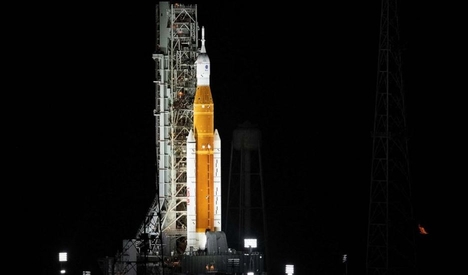NASA will give it another go. After having engine issues during the first countdown this week.
Managers said on Tuesday that they would be modifying the processes for fuelling vehicles in order to address the problem.
At the Kennedy Space Center, the crew capsule atop the 322-foot-tall (98-meter) rocket that has been there since launch is now vacant. It is the most powerful rocket that NASA has ever constructed in its history.
The Space Launch System rocket, also known as SLS, will make an effort to send the capsule all the way around the moon and back again. There will be no humans on board; only three dummies used for testing. If everything goes well, it will be the first time a spacecraft has been sent to the moon since the Apollo mission was carried out by NASA fifty years ago.
During the attempt to launch the rocket on Monday, one of the four main engines in the core stage of the rocket was not able to be cooled enough prior to the intended activation minutes before liftoff. The other three didn’t quite make the cut, unfortunately.
Once fuelling has begun at the pad, the cooling process will begin a half an hour earlier than usual for the attempt that will take place on Saturday afternoon, according to the authorities.
According to John Honeycutt, the programme manager for the rocket at NASA, the timing of this engine chilldown was earlier during successful testing last year; thus, changing it earlier may do the trick. Honeycutt made this statement to the press.
Honeycutt also cast doubt on the reliability of one of the engine sensors, stating that the sensor may have delivered erroneous information on Monday. He pointed out that in order to replace that sensor, the rocket would have to be hauled back into the hangar, which would result in a delay of many weeks.
The test trip, which will cost a total of $4.1 billion, is the first step in NASA’s Artemis moon-exploration programme. Artemis is named after the Greek mythological twin sister of Apollo. It is possible that astronauts may be able to go on a trip around the moon as early as 2024 and will make their first attempt at landing on the moon in 2025.

